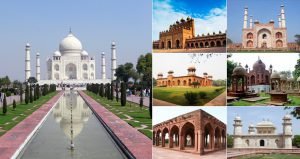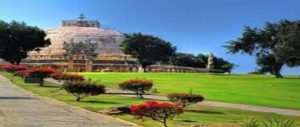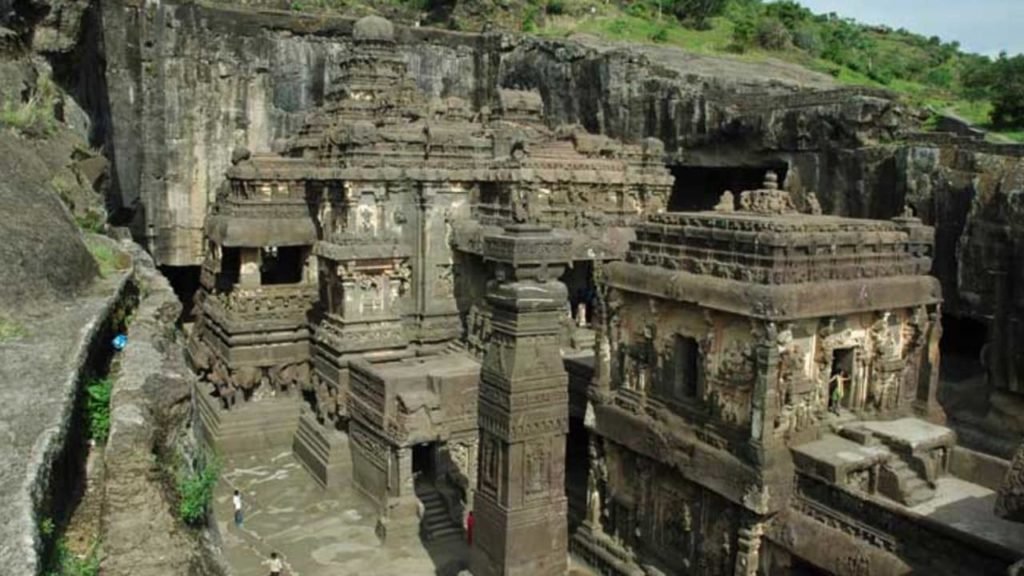- Overview
- Trip Outline
- Trip Includes
- Trip Excludes
- Gallery
- Reviews
- Booking
- FAQ
No details found.
No details found.
Itineraries
Day 1
varanasi
1. sarnath Museum
2. ganga river
3. Kashi Vishwanath Temple
4. Hanuman Temple
5. Durgamata Temple
6. manas mandir
7.Bharat Mata Temple
8. BHU University
Day 2
Bodhgaya
Mahabodhi Temple, Bodh Gaya
The Mahabodhi temple, also called the "Great Awakening Temple", is a UNESCO World Heritage Site located in Bodhgaya, Bihar. It is a Buddhist temple that marks the location where the Lord Buddha is said to have attained enlightenment. Lord Buddha holds a very significant place in the religious history of India as he is believed to be the 9th and the most recent incarnation of Lord Vishnu to have walked the earth. The temple spreads over an area of a whopping 4.8 hectares and is 55 meters tall
Great Buddha Statue, Bodh Gaya Overview
This statue of Lord Buddha is the tallest in India and was instated by the XIV Dalai Lama in 1989. It is a meditating Buddha resting on a giant lotus, constructed using intricately carved sandstone and red granite.
Tibetan Refugee Market, Bodh Gaya Overview
This market is paradise for shopping lover. It offers a large variety of winter-wears, handicrafts and souvenirs, etc.
Day 3
Bodhgaya
Bodhi Tree, Bodh Gaya Overview
The Bodhi Tree, located 100 kilometres to the south of Patna in the north Indian state of Bihar, is perhaps the most prominent and respected sacred places in Buddhism because of the rich historical significance attached to it. It is under this tree that Prince Siddhartha Gautama, the spiritual teacher who later became to be known as the Buddha, attained enlightenment. It is believed that Prince Siddhartha had to sit and meditate under this tree for seven days. Later on, a shrine known as Animisalocana Cetiya was erected on the spot where he had sat down. A small temple was also built near the Bodhi tree in the 7th century.
Day 4
Rajgir+Nalanda
Rajgir is 100 kms approx from Patna, famous for Buddhism and Jainism, one day is sufficient, u can reach here by trains easily from Patna prefer train journey in Bihar becoz roads are in Pathetic condition, place suited for family trip. Now i tell u itinerary
1. start early from patna
2. reach Naland and finish it by 12 PM
3.reach Rajgir that is 10-15 kms
4. first of all visit vishwa shanti stoop on the hill top that is closed after 4. and 4.30 PM so reach by the time
5. reach hot springs and hill , here hill trek is closed by 4 pm while springs are in temple that are open by 8. pm, must take hot water baths so carry one pair of clothes extra
6 all other places like venu van and museum are opened till 6 pm
7. This journey is fit for the taxi hired from Patna city
8. If you go by train, u have to take break journey by shared autos that is very risky becoz they carry 15 passengers in a small auto now u can understand.
Day 5
Khushinagar
Kushinagar is a holy place which is based on great historic and spiritual significance. It was crowned as an esteemed pilgrimage center of the Buddhists which is located in the Kushinagar district of Uttar Pradesh. Tourists from every corner of the globe come here in search of peace.
Kushinagar has numerous stupas (a heap like structure holding Buddhist remnants, once thought to be places of Buddhist worship, typically the remains of a saint) and viharas (a vihara is an Indian Buddhist monastery),which are almost finished but still have their own charm and importance in the life of the people. Most of these structures ruined in the period between the 3rd and the 5th centuries.
The Muktabandhana Stupa is considered the most important destination in Kushinagar which houses the last cremated remains of Lord Buddha. It has a beautiful idol of Lord Buddha which is carved by a monk and restored by king Haribala during the period of 413-455 A.D.
There are two striking temples: the Nirvana temple and the Mathakaut temple. It is placed near the Nirvana temple where Lord Buddha breathed his last. It is located at Khushinagar where one can see a black stone image of Lord Buddha during excavations.
The Wat Thai temple is one of the major attractions of Kushinagar, which is built in a typical Thai-Buddhist architectural style.
Day 6
Lumbini
Ashoka Pillar, Lumbini Overview
The Ashoka Pillar in Lumbini is one of the 3rd Century stone pillars built under the reign of Emperor Ashoka. It was erected as a mark of respect by Ashoka after he visited Lord Buddha's place of birth and decided to accept Buddhism. These facts make the pillar a significantly important attraction in the country.
Bodhi Tree, Lumbini Overview
The Bodhi Tree in Lumbini is located in the divine premises of the Maya Devi Temple complex right next to the vibrant shrine on the banks of the serene Maya Devi Pond. It is considered highly sacred in the region and worshipped with great devotion. One may visit the tree after exploring the temple before maybe sitting by the pond admiring the tranquillity of the site.
Mayadevi Pond, Lumbini Overview
Located right in front of the Maya Devi temple in Lumbini, Maya Devi Pond is quite a simple yet attractive square shaped structure with steps all around to ascend to the water level. Also known as Puskarini, this is where Gautama Buddha's mother - Maya Devi - used to bathe.
Cambodian Monastery, Lumbini Overview
Cambodian Monastery in Lumbini is an amalgamation of colorful fantasy and spiritual forces making it one of the most fascinating temples in the region. Built in a architectural design matching the famous Angkor Wat, the charming monastery is surrounded by a square railing, each having four 50m green snakes. The large compound has an outer wall covered with beautiful and intricate designs.
Royal Thai Buddhist Monastery, Lumbini Overview
Royal Thai Monastery in Lumbini is an imposing and stunning wat-style monastery dedicated to Buddhist practises. The gleaming building is constructed from white marble and the blue-roofed meditation center are example of a fine architectural style. The beautiful designs and carving on the temple wall makes this place a must-visit.
Day 7
Sarasvarti
Sravasti has been identified with the remains at Saheth-Maheth, situated on the banks of the river Rapti. It was the capital of ancient Kosala kingdom and is sacred to the Buddhists because it is here that Lord Buddha performed the greatest of his miracles to confound the Tirthika heretics. These miracles include Buddha creating multiple images of himself, which has been a favourite theme of Buddhist art. It is well-connected with good roads constructed under Buddhist-Circuit.
1. About 15km from Bahraich lies this sprawling complex of Buddhist stupas and ruins, believed to be founded by the mythological king Sravast, the town played host to Buddha for 27 years and was his annual rainy season retreat.
2. It was the capital of the ancient Koshal empire and here the Buddha showed his divine prowess to impress upon the non-believers.
3. The excellently-preserved ruins have a meditative air around them and amid them stands an ancient Bodhi Vriksh (tree).
4.The huge World Peace Bell in Sravasti established with Japanese help, is said to convey the message of humanity through its toll.
Day 8
Lucknow
Bara Imambara, Lucknow Overview
The Bara Imambara of Lucknow is one of the most famous monuments of the city. Also known as Asfi Imambara, after the name of the Nawab of Lucknow who got it constructed, it is an important place of worship for the Muslims who come here every year to celebrate the religious festival of Muharram. The Imambara is primarily known for its incredible maze, known as Bhul Bhulaiya locally, which is located on the upper floor of the monument.
Hazratganj Market, Lucknow Overview
Hazratganj, the central shopping district of Lucknow, has a long history behind it and has undergone a great makeover that bridges the past and the present and continues to serve as Lucknow's central shopping arcade.
Lucknow Zoo, Lucknow Overview
Located in the heart of Lucknow, the Lucknow Zoo, also known as the Nawab Wazid Ali Shah Prani Udyan, is a favourite among wildlife enthusiasts from all over the city. This massive zoo is spread over an area of 71.6 acres and was established in the year 1921 to commemorate the visit of His Royal Highness, the Prince of Wales to Lucknow.
Day 9
Agra
Agra is a major tourist destination because of its many Mughal-era buildings, most notably the TajMahal, Agra Fort and Fatehpur Sikri, all of which are UNESCO World Heritage Sites. Agra, the land of the TajMahal, the monument that has come to eternally symbolize love, is a city of rich historical and architectural heritage which is visited by a large number of tourists every year. Though TajMahal is the single largest tourist attraction of this city
Agra Fort
Agra Fort is a historical fort in the city of Agra in India. The Agra fort is a UNESCO World Heritage site It is about 2.5 km northwest of its more famous sister monument, the TajMahal. The fort can be more accurately described as a walled city.It comprises many fairy-tale palaces, such as the Jahangir Palace and the KhasMahal, built by Shah Jahan; audience halls, such as the Diwan-i-Khas; and two very beautiful mosques.
Taj Mahal
The TajMahal is synonymous to love and romance. The name "TajMahal" was derived from the name of Shah Jahan's wife, MumtazMahal, and means "Crown Palace". The purity of the white marble, the exquisite ornamentation, precious gemstones used and its picturesque location, all make a visit to the TajMahal gain a place amongst the most sought-after tours in the world. However, until you know the love story behind the construction of the TajMahal, the beauty of the same would not enliven in your heart and mind and instead would come up as just another beautiful building/monument.
Mathura
Mathura is believed to be the birthplace of Krishna, which is located at the Krishna Janmasthan Temple Complex.The deity Lord Krishna is said to have been born on the site of Sri Krishna JanmaBhoomi, a Hindu temple. Dotting the Yamuna River are 25 ghats (flights of steps down to the water), of which VishramGhat is considered the holiest. Sati Burj is a 16th-century memorial tower. Dwarkadhish Temple has a carved entrance and a black-marble idol of Lord Krishna.
Vrindavan
Vrindavan is a holy town in Uttar Pradesh, northern India. The Hindu deity Krishna is said to have spent his childhood here. It's home to temples, many dedicated to Krishna and his lover, the deity Radha. At BankeBihari Temple, the curtain in front of Krishna's statue is opened and closed every few minutes. At Radha Raman Temple, a gold plate beside Krishna signifies Radha. PremMandir is a huge white marble temple.
Day 10
Delhi
Departure at Delhi
No details found.
No details found.
No Details Found












There are no reviews yet.